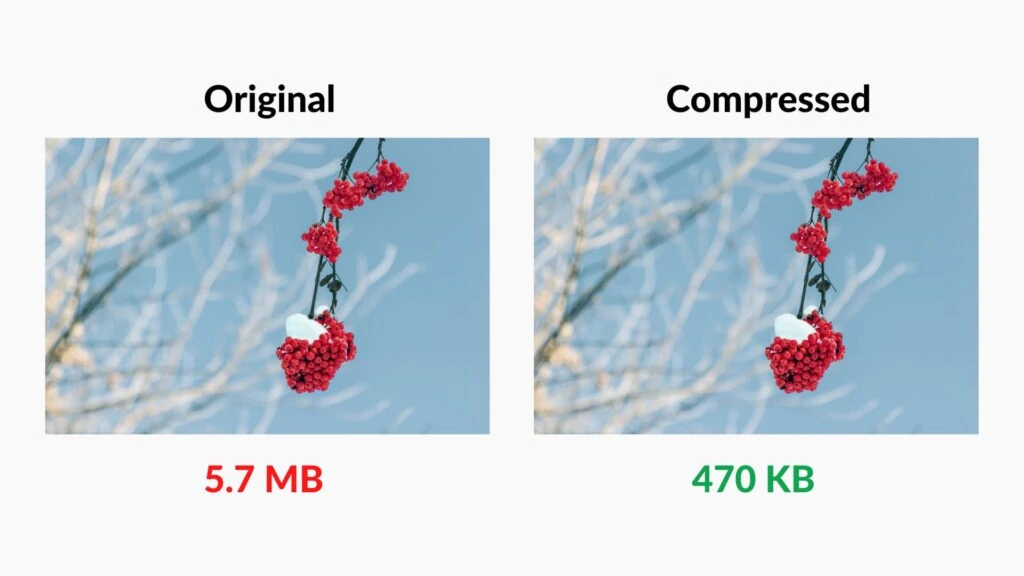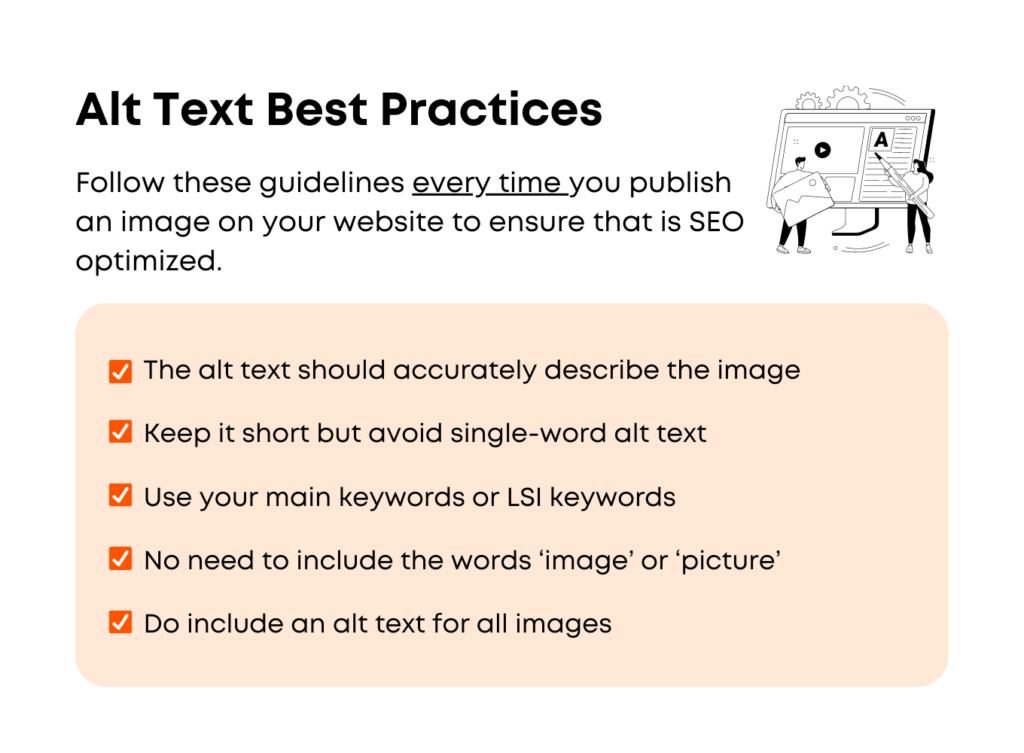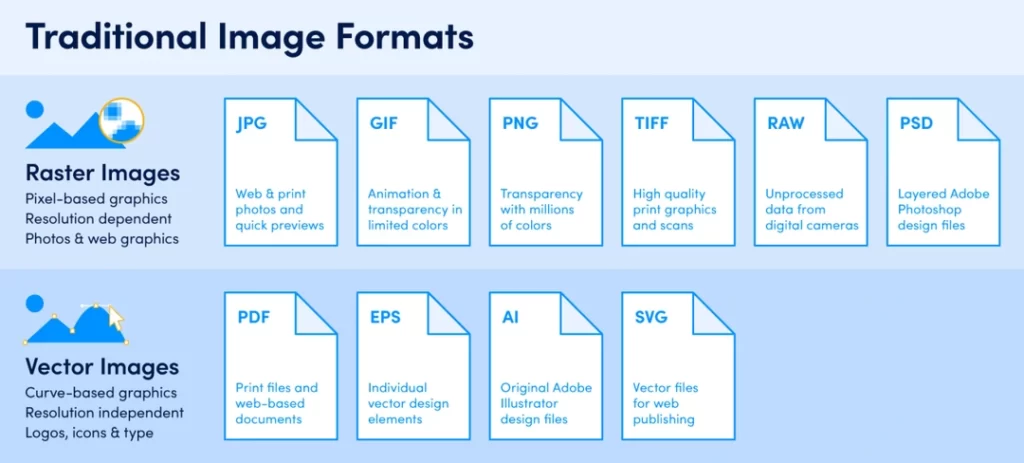A Guide To SEO-Friendly Images: Top 10 Tips
Do you want to spend hours creating visually stunning content only to find it missing in search engine results? Well, fear not, my friends, because I have a secret weapon for you: SEO-friendly images. That's right; optimising your images for search engines can draw more attention to your content and achieve higher interaction rates. But where to start? Don't worry; I'll explain everything about SEO-friendly images in this guide, from choosing the correct file format to optimising alt tags and everything in between. So, buckle up and get ready to skyrocket your search engine rankings, all with some help from the power of images.
Table of Contents
What Makes SEO-Friendly Images?
Image SEO (Search Engine Optimisation) refers to optimising the images on a website to improve its visibility and search engine ranking. This involves several factors, including optimising image file names, adding descriptive alt text, compressing the image size for faster loading times and ensuring that images are relevant to the content on the page.
Search engines like Google use complex algorithms to rank websites, and image optimisation is essential in determining a web page's relevance and usefulness. Optimising your images for search engine optimisation can help your website rank higher in search engine results, attract more organic traffic and improve user experience by providing high-quality images that load quickly and enhance the page's overall content.
Image SEO can be vital for websites that rely heavily on visual content, such as online shops, travel blogs and photography websites. Optimising images for relevant keywords and helpful alt-text descriptions can improve the accessibility and search engine visibility of your visual content, which ultimately leads to more traffic, engagement and conversions.
Top 10 Tips for Image SEO
1 – Make Sure Images are Compressed

In today's digital age, websites must provide a seamless and fast user experience to their audience. Images play an essential role in enhancing the visual appeal of a website and conveying the desired message to visitors. However, high-quality images often have a large file size, leading to slow load times and affecting the website's overall performance. This is where image optimisation comes into play.
Image optimisation compresses the size of the image file without sacrificing visual quality. This improves the website's loading speed and reduces the bandwidth used, which can lead to significant cost savings for the website operator.
Several specialised image enhancement tools, such as Lightroom, Photoshop, JPEGmini, TinyPNG and Shortpixel, can help you achieve the best possible performance for your images. These tools use advanced compression techniques to reduce the file size of your images while maintaining their quality.
We have created a comprehensive resource for WordPress users to guide you through image optimisation. This guide includes step-by-step instructions for optimising images using popular plugins such as Smush, EWWW Image Optimizer and Imagify. It also covers best practices for image file formats, resolutions and files naming conventions.
2 – Use the Correct Image Sizes
One of the most common questions we receive is about the appropriate image size for use on a website. The answer depends on the specific area of the website where the image is to be displayed, and there are several recommended size options to consider.
For blog posts, the recommended image size is 1500 pixels wide and auto height. This provides a good balance between image quality and file size while ensuring that the image fits well within the layout of the blog post.
An automatic width and height of 1500 pixels are recommended for gallery posts. This allows for a consistent image size throughout the gallery while minimising load times and bandwidth usage.
Slideshows and full-width blocks typically require larger images to fill the entire screen. For these areas, it is recommended to use a width of 2880 pixels and a height of 1500 pixels.
However, more than simply uploading images in the recommended sizes may be required. You must also scale the photos appropriately to avoid performance problems. Uploading large images and scaling them down in HTML or CSS can harm website performance. This is called the “serve scaled images” problem and can easily be avoided by scaling the images appropriately before uploading them to your website.
3 – Optimise Alt-Tags

An alt tag is a text description assigned to an image to describe what the image is about. It is an important attribute that can significantly impact your image SEO and the overall accessibility of your website.
One of the main functions of alt tags is to provide an alternative text description for an image if users cannot load it onto a web page. This ensures that users with slow internet connections or other technical problems can understand what the image is about.
In addition, alt tags are also used by search engines to understand better the image's content and the context in which it appears on the web page. By using relevant and descriptive alt tags, you can improve the search engine optimisation of your website and make it easier for search engines to index and rank your content.
Another critical function of alt tags is that they act as anchor text when you link your website with an image. When a user clicks on a photograph related to your website, the alt tag provides additional context and information about the page content they are directed to. This can help improve user engagement and click-through rates.
Finally, alt tags are also crucial to the accessibility of your website. For users with visual impairments who use screen readers to navigate the web, alt tags describe the image the screen reader can read aloud. This way, visually impaired users can better understand the webpage's content and engage meaningfully with your website.
4 – Include an Image Sitemap
An image sitemap is a particular type of sitemap that contains a list of all the images on your website and gives additional information about each image, such as the image URL, title and caption.
One of the main advantages of an image sitemap is that it provides a quicker way to inform search engines about new content on your website. By submitting an image sitemap to search engines, you can ensure that they know all the images on your website and can crawl and index them more efficiently. This can help improve your website's visibility in search engine results pages (SERPs) and increase the likelihood of your images appearing in image search results.
If you use WordPress and the Yoast SEO plugin, enabling an XML sitemap for your website is simple. Yoast SEO automatically creates a sitemap with image information that includes text content and imagery. This makes it easier for search engines to find and index your images, improving your website's overall SEO performance.
An image sitemap makes it easier for search engines to crawl and index your website and helps track and analyse the performance of your images. By monitoring the number of impressions and clicks for each image in your sitemap, you gain insights into which images perform well and which may need further optimisation.
5 – Add Open Graph Tags

The Open Graph protocol is one strategy that can help your content be more shareable and visually appealing on social media platforms such as Facebook, Twitter, and LinkedIn.
While not necessarily a direct ranking factor for SEO, the Open Graph protocol plays a vital role in social media optimisation. Open Graph tags are snippets of code added to your website's metadata to provide social media platforms with information about your content. This information includes the title, description and image thumbnail for your content, which allows for a more visually appealing and accurate representation of your content when you share it on social media platforms.
Enabling Open Graph tags on your web pages is a simple process and can be done with the Yoast SEO plugin. With this powerful plugin, you can help Open Graph tags and customise your image thumbnails. You can also test your URLs to ensure your Open Graph tags are working correctly and displaying as intended.
To check if a website has Open Graph tags, you can view the source code of a webpage. Right-click in your browser and select “View Page Source” to view the HTML code of the webpage. Look for tags such as “og:image” and other similar tags that indicate the presence of Open Graph metadata.
6 – Implement Structured Data
Structured data is a powerful tool that allows you to make your website stand out in search engine results pages (SERPs) and improve your online visibility. By implementing structured data on your website, you can provide search engines with detailed information about the content on your pages, including product listings, videos, events and more.
One area where structured data can be very effective is Google Image Search. By implementing the structured product or video data on your website, you can increase the likelihood that your images will show up as rich results in Google Image Search, making them more visible to potential customers and users.
Several options are available to implement structured data on your WordPress website. One of the most popular and user-friendly options is the Yoast SEO plugin, which includes a built-in tool for implementing structured data. With Yoast SEO, you can easily add structured data to your product or video pages and customise the information contained in the structured data.
Alternatively, you can use Google's Structured Data Markup Helper, a free tool to add structured data to your web pages through a simple point-and-click interface. With Structured Data Markup Helper, you can identify the content on your pages that you want to mark up with structured data and then generate the necessary HTML code to add to your pages.
By implementing the structured product or video data on your WordPress website, you can improve the visibility of your content in Google Image Search and increase the likelihood of generating more visitors and potential customers. So if you haven't already, it's time to learn how to implement structured data on your WordPress website and reap the benefits of improved online visibility.
7 – Ensure Images are Mobile-Friendly
In today's mobile-focused world, it is no surprise that Google has changed its algorithm to prioritise mobile-first indexing. This means that search engine crawlers primarily look at the mobile version of a website and use this as the primary factor in determining the website's search engine ranking. Therefore, not only the layout of your website but also your images must be mobile-friendly.
So how can you ensure that your images are optimised for mobile devices? The first step is to ensure that your website is responsive and adapts to the screen size of the viewed device. This means that images and other elements on your website should be designed to adjust automatically to the device screen size.
Although some website templates and builders automatically resize images, it is vital to check that images are scaled correctly and that their quality is maintained. For this purpose, you can set the image size based on the device's width. Add custom CSS code to your website that tells the browser how to display the image on different devices.
If you need help with making your images responsive, there are many online resources to help you. One excellent resource is the CSS tutorial from W3Schools, which provides a simple guide to customising your images and website layout.
As well as ensuring your images are responsive, you can take other steps to optimise your images for mobile devices. For example, you can use image compression tools to reduce the file size of your images without compromising on quality. You can also use descriptive file names and alt tags to help search engines better understand the content of your images and improve their visibility in search results.
8 – Create your own Images
Using stock images on your website is fine but doesn't necessarily help your search engine rankings. This is because many other websites may be using the same photos. Just as unique written content is better for search engine optimisation, uploading amazing images can help your website stand out from the competition.
Using unique images makes your website more visually appealing and provides valuable information for search engines. This is because search engine algorithms are designed to favour unique and original content. By delivering unique images, you increase the likelihood that search engines will recognise and index your website content.
Creating unique images for your website can be a fun and creative process. You can hire a professional photographer or create your own with a tool like Canva. Even if you don't have a professional camera, you can use your smartphone to take high-quality images that you can use on your website.
In addition, unique images can help reinforce your brand identity and make your website more memorable for visitors. Consistent visual branding for all aspects of your website, including images, can help create a sense of trust with your audience.
9 – Use Standard Image Formats

Google Images is a powerful platform that can drive traffic to your website. However, ensuring that your images are in the correct format to be indexed and displayed correctly is essential. Google Images supports various image formats, including BMP, GIF, JPEG, PNG, WebP and SVG. When saving your images, make sure you use the correct file type for the image.
It is also essential to consider the file name of your images. Google's algorithm takes the file name into account when ranking images. Therefore, it is recommended that you use descriptive file names that accurately reflect the image's content. The file name extension is also recommended to match the file type, which can help search engines better understand the image's content.
In addition to traditional image file formats, you can include images using data URIs. This method allows you to have a file, such as an image, inline by specifying the source attribute of an IMG element as a Base64-encoded string. This can be useful when inserting small images directly into your HTML code without needing a separate image file.
10 – Optimise for SafeSearch
SafeSearch is a valuable tool that ensures users receive safe and appropriate search results. A filtering option in Google user accounts filters out explicit images, videos and websites from search results. It is vital to ensure that Google understands the nature of your website so that you can apply the appropriate SafeSearch filters to your website.
One way to mark up the content of your website is to use the SafeSearch meta tag. The SafeSearch tag signals search engines about your website's content and help Google decide whether you should apply SafeSearch filters.
It is essential to understand that SafeSearch applies to all websites and that it is significant for websites unsuitable for all age groups, such as adult content or violence. By using the SafeSearch meta tag, you are not only ensuring that your content is filtered correctly but also showing Google that you are taking steps to ensure a safe user experience.
To mark your website as SafeSearch, add the meta tag to the head section of your website's HTML code. The format of the tag is simple and can be inserted into the header of the page along with other meta tags:
<meta name="safe-search" content="on">By using the SafeSearch meta tag, you can be sure that the content of your website will be filtered appropriately for all users, allowing for safer and more protected searches.
Wrapping Up
Finally, we have presented the ten most important tips for optimising images for search engine optimisation. By following these tips, you can ensure that your photos are optimised for search engines so your website will rank better in search results and ultimately drive more visitors.
Remember that the key to image SEO success is providing the best user experience possible. This means creating high-quality, unique images relevant to your content and optimising them for web performance and accessibility. With these tips, you can take your image SEO game to the next level and stand out.
As always, it's essential to remember that SEO is an ever-evolving field, and what works today may not work tomorrow. So stay curious, support learning, and never stop experimenting. Have fun optimising!
